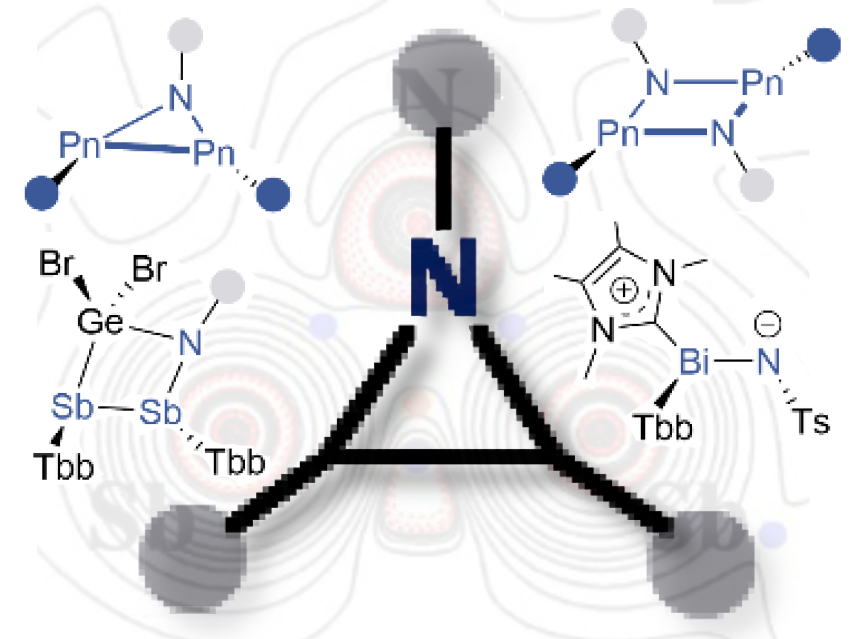Three- and four-membered organic rings are important molecular entities in organic synthesis and medicinal chemistry. Subsequently, such motifs readily release ring-strain through cycloaddition reactions or by reacting with nucleophiles or electrophiles, allowing for facile diversification. Similarly, small inorganic rings have shown promise in promoting bond activation and, in some cases, catalysis. However, their synthesis is significantly more challenging.
Alessandro Bismuto, University of Bonn, Germany, and colleagues have synthesized and characterized three- and four-membered heterocyclic rings containing Sb₂- or Bi₂-units, obtained from heavy dipnictenes (Sb=Sb, Bi=Bi) and different azides. The team synthesized azadistibiridines via cycloaddition of a distibene (Sb₂Tbb₂; Tbb = 2,6-[CH(SiMe₃)₂]₂-4-tBu-C₆H₂) with various azides (trimethyl silyl-, phenyl-, and adamantyl-azide). A spontaneous reaction occurred with selective formation of the corresponding azadistibiridines (three-membered rings).
Additionally, for the first time, the researchers were able to extend this protocol to dibismuthene (Bi₂Tbb₂), usually a more inert fragment. They synthesized an iminobismuthane dimer (four-membered ring; shown above, top right), which showed a divergent reactivity compared to that of distibene.
Taking advantage of the strain imposed by those rings, the team then explored the reactivity of both classes of compounds. They was able to isolate a ring-expansion product of the azadistibiridine. Insertion of a GeBr₂ occurred in the Sb−N bond to form a four-membered ring.
With a similar strategy, starting from the iminobismuthane dimer but using a nucleophile instead (IMe₄ = 1,3,4,5-tetramethylimidazol-2-ylidene), the team has been able to synthesize the first NHC-stabilized hetero-dipnictene. Analysis of the electronic features of this NHC-supported iminobismuthane suggestes it is best representation by a zwitterion (shown above, lower right).
According to the researchers, these findings represent a significant theoretical and practical advancement in main group chemistry. These two examples represent just a small glimpse of the possibilities offered by small inorganic rings, and how their unique properties can be used to create new and complex molecular structures that would otherwise be difficult or impossible to achieve.
- Azadistibiridines and Stabilised-iminobismuthane: Reactivity of Small Inorganic Rings in Heavy Main Group Chemistry,
Prasenjit Palui, Matthias Bollenbeck, Daniel Meleschko, Philipp Brehm, Rosa M. Gomila, Gregor Schnakenburg, Antonio Frontera, Alessandro Bismuto,
Chem. Sci. 2025.
https://doi.org/10.1039/D5SC03416G





